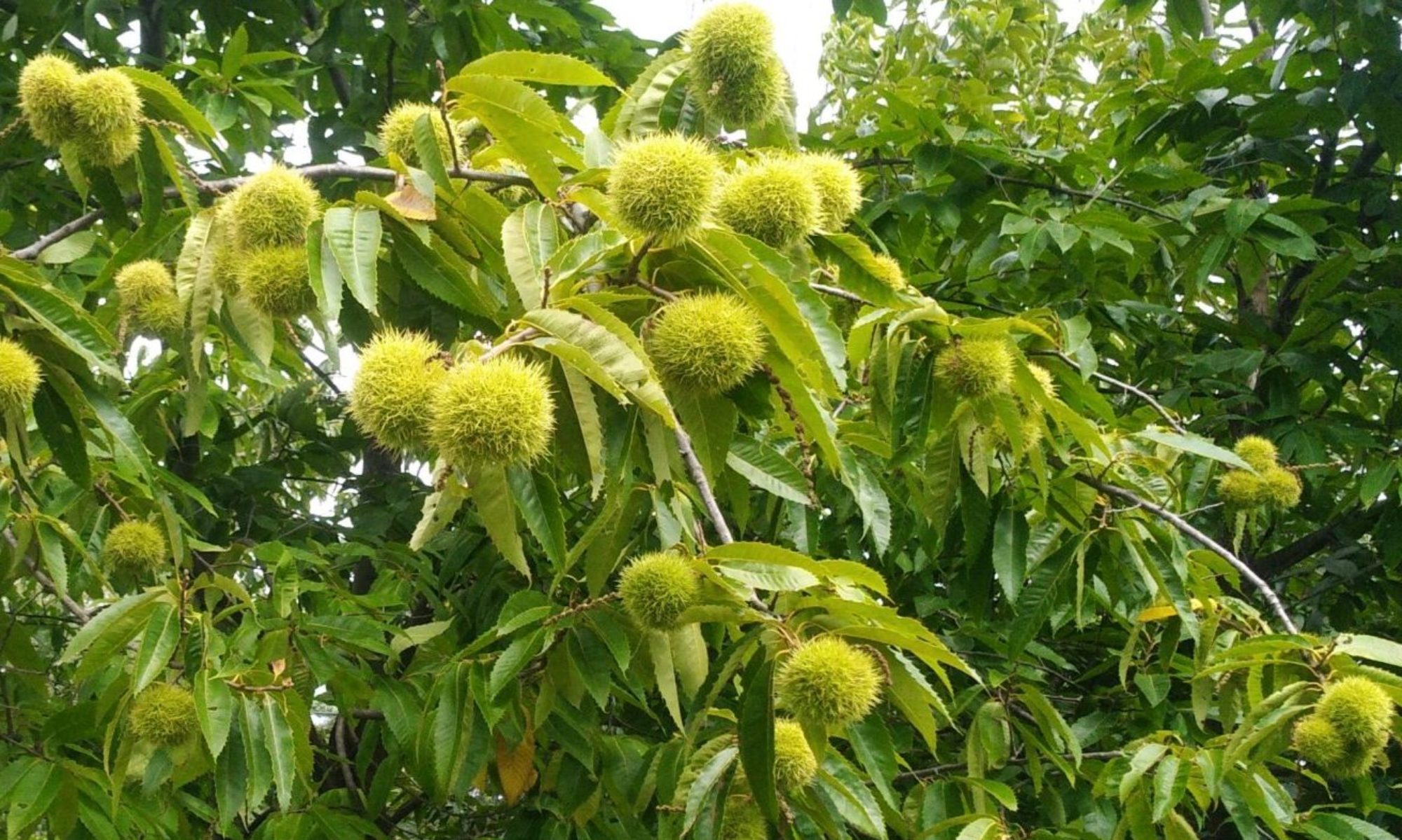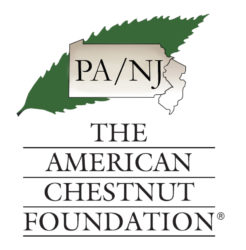 The American Chestnut Foundation (TACF) is initiating a range-wide search for surviving American chestnuts in the forest. The PA-NJ Chapter of TACF is seeking to identify and conserve 250 new and unique sources — beyond the 200 already conserved in our Chapter.
The American Chestnut Foundation (TACF) is initiating a range-wide search for surviving American chestnuts in the forest. The PA-NJ Chapter of TACF is seeking to identify and conserve 250 new and unique sources — beyond the 200 already conserved in our Chapter.
WHY?
— To conserve unique sources of American chestnut genetics in our Germplasm Conservation Orchards (GCOs).
— To create locally adapted and genetically diverse populations of blight-resistant chestnut trees for restoration.
Learn about:
Targeted American chestnut Conservation Missions
Two ways to report a tree:
TREE LOCATOR FORM:
Follow the link to download our Tree Locator Form (TLF). If you are unable to download and print the form, contact our office and we will send you a paper copy. Be sure to fill out the form with as much information as possible. We’ve moved and updated our TLF with our new address. If you are using an older form please confirm the address here. Find our new mailing address at the bottom of this page.
print the form, contact our office and we will send you a paper copy. Be sure to fill out the form with as much information as possible. We’ve moved and updated our TLF with our new address. If you are using an older form please confirm the address here. Find our new mailing address at the bottom of this page.
TREESNAP.ORG
Got a smartphone? Check out the TreeSnap.org App![]() . You can report information and share photos directly with us using this App. We will still require a sample. Be sure to include the TreeSnap id number when you mail it.
. You can report information and share photos directly with us using this App. We will still require a sample. Be sure to include the TreeSnap id number when you mail it.
Remember, whether you use a paper form or the smartphone app, we would like you to submit a leaf and twig sample for each reported tree (if at all possible). Photos can be helpful but are not required and do not take the place of a leaf and twig sample. Email photos to mail@patacf.org
We will confirm the identity of your tree(s) and add them to our Dentatabase — a database of American chestnuts and related species. If the tree is a wild-type native, we may ask that you send us nuts for our breeding research.
HOW TO SUBMIT A LEAF AND TWIG SAMPLE:
- Late Spring or summer is the best time to collect samples for identification purposes.
- Cut a 6″ to 8″ twig with at least 3 mature leaves attached. From a sunny exposure, if possible.
- Press leaves between pieces of cardboard to flatten and prevent curling or crushing as they dry. Crushed or bent leaves are much harder to analyze, as are leaves that are not freshly collected.
- To prevent mold, do not put the sample into a plastic bag.
- Photographs can help with identification. We are not likely to be able to ID solely from a picture, but it can add to the whole package of understanding your tree.
-
Please be sure to include a Tree Locator Form or the TreeSnap id number, so we can keep track of your sample and send you results. This is vital for our inventory of wild trees.
Send Sample to:
Pennsylvania State University | PA-NJ TACF
108 Research A Modular Lab
118 Serviceberry Road
University Park, PA 16802

